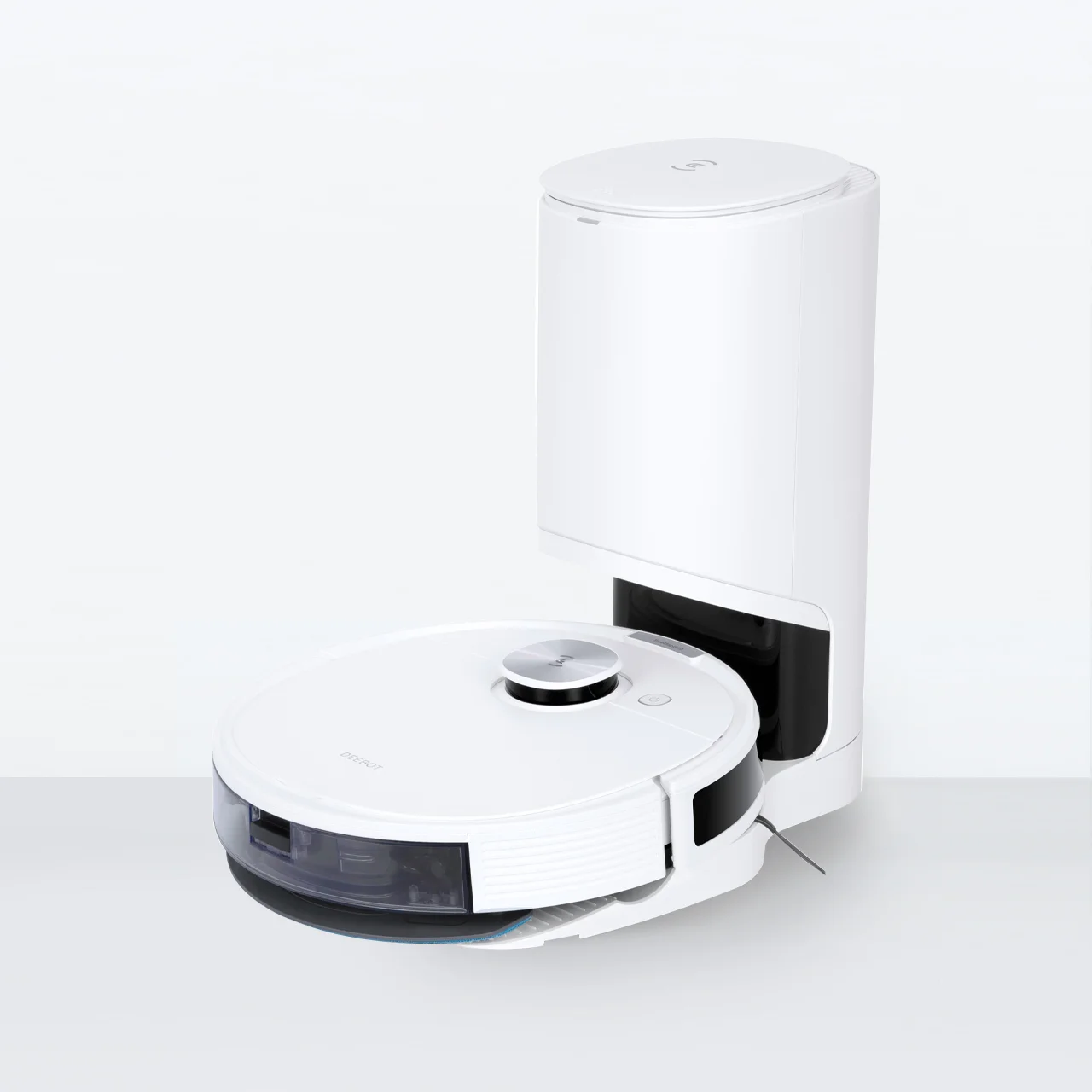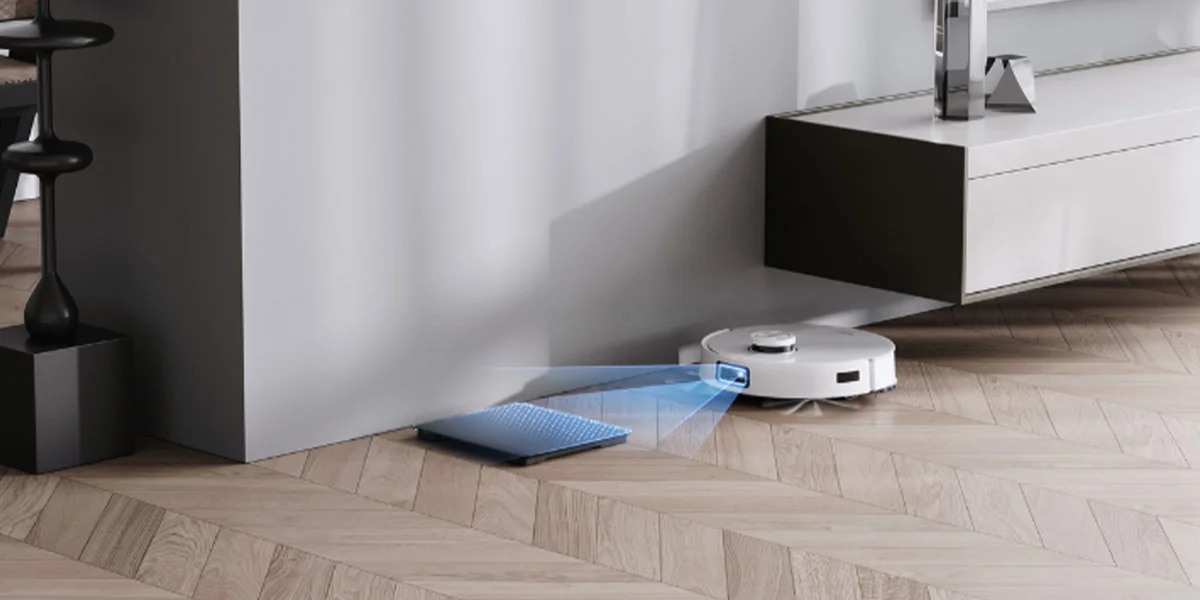
A seemingly small design detail, thresholds serve a couple of purposes, both practical and aesthetic, in modern homes. Entry door thresholds, that is, your home’s front, side and back doors, are typically higher to prevent water leaking into the home in the event of a flood.
Meanwhile, door thresholds between interior rooms (otherwise called “door bars”) serve as visual transitions between different floor types, temperature retainers to stop cold or hot air from entering a room through door gaps for better energy efficiency or to reduce the risk of slipping.
They are seen in any modern home and therefore, robot vacuums should be able to cross them, so they can do their jobs properly.
Can Robot Vacuums Go Over High Thresholds?

Yes, robot vacuum cleaners are designed to be able to go over thresholds. The question is how high of a barrier they can cross. To give you an idea, threshold height can range from 6mm to over 25mm; a “level threshold”, created to be more accessible to wheelchair users, is defined as within 15mm.
Some automatic vacuums can struggle to climb high thresholds due to slim, low-profile design that makes them low to the ground, insufficient traction on their wheels which causes them to spin in place, poor sensors that prevent them from being able to detect a low or narrow barrier, or poor motor power preventing them from overcoming the elevation. Below, we’ll go over features to look for to ensure your robot can get over door thresholds.
Best DEEBOT Robot Vacuums That Can Go Over Threshold
Many DEEBOT robot vacuums produced by ECOVACs can cross threshold barriers as high as 20mm1. Find out more about their barrier-climbing specs and other key features:
DEEBOT X5 PRO OMNI

The DEEBOT X5 PRO OMNI can overcome obstacles up to 22mm high, ensuring seamless navigation across thresholds and sliding door slides, resulting in uninterrupted cleaning sessions. This version is equipped with the AINA 2.0 Intelligent Navigation Model that offers real-time navigation and obstacle avoidance, as well as AIVI 3D 2.0 obstacle avoidance tech to ensure precise obstacle recognition and strategic avoidance. It also uses Real-time Path Planning to swiftly adapt to evolving surroundings, as well as the ECOVACS’ cutting-edge YIKO smart assistant for hands-free control with natural language voice instructions.
DEEBOT T30S PRO

The DEEBOT T30S PRO can clear barriers up to 20mm high to ensure smooth cleaning sessions. Its TrueMapping 2.0 feature facilitates rapid and accurate mapping, allowing the device to map 100 square metres in just 6 minutes. It comes with an auto-empty station perfectly suited for those with allergies or homes with pets which can hold months of dirt2 in its hypoallergenic dust bag. The device makes use of TruEdge Technology to extend its mop plate for full coverage so that it reaches every nook and cranny of the surfaces it cleans. In addition, the Auto-lift Mopping System raises the mopping plates so that the robot vacuum can go over rugs and carpets when these surfaces are detected.
DEEBOT N20 PRO PLUS

The DEEBOT N20 PRO PLUS has high-traction drive wheels that effortlessly scale 20mm thresholds and make use of threshold-climbing algorithms to intelligently navigate and surmount obstacles. The device also uses carpet detection sensors for smooth transitions between different floor types. This model is equipped with TrueMapping Intelligent Path Planning that uses laser radar scanning for precise navigation, which ensures thorough cleaning thanks to its systematic path coverage. It also provides quick mapping in just 8 minutes and stable map restoration via the ECOVACS HOME App. The DEEBOT N20 PRO PLUS also supports voice control for easier operation, which includes Alexa and Google Assistant.
Key Features of Robot Vacuums that Climb Thresholds

Here are some characteristics to look for in a smart vacuum cleaner to ensure your robot housekeeper has no trouble summiting door thresholds.
Sensor Sensitivity
Take a look at what kind of sensors the robotic vacuum cleaner has. Certain technologies are better at understanding depth information better than others, while some are better suited for analysing and interpreting visual images. As pertains to door thresholds, a smart vacuum equipped with 3D ToF or infrared sensors technologies, which are effective at understanding the height and size of objects, are great for recognising door sills.
Climbing Capabilities
The smart vacuum cleaner’s climbing capabilities are affected by a couple of components. Larger wheels with rubberised or textured wheels for traction, a powerful motor to provide more torque to move the vacuum cleaner forward and up, and a lighter body all contribute to getting the device over thresholds. It’s worth noting that room dividers with rounded or ‘bevelled’ edges on room dividers are typically easier to climb.
Bumper Height
The shape of the bumper, located at the front of the robotic vacuum’s body, can also play a role in its ability to go over door thresholds. Ones with higher bumpers and angled fronts could be better equipped to tackle high thresholds.
Brush Configuration
The arrangement of the robot’s brushes (they usually have a main front brush and two side brushes) is another important factor to keep in mind. DEEBOTs, for instance, are equipped with floating main brushes at the front that spin. They are configured with enough clearance to easily swing over 20mm-high door sills. This may not be the case for all robot vacuums, some having front brushes with low clearance.
Design For Threshold-Climbing
Some models may have special designs for getting over thresholds, such as higher profiles for better ground clearance, or adjustable height which allows the smart device to lower or raise its height to navigate a wider range of surfaces. It may even be the case that some robotic floor cleaners are trained with images of door sills so they can recognise them faster.
Presence Of Mop Pads
Another key factor that influences the auto vacuum’s ability to climb high thresholds is whether it has mop pads and how flush these sit to the bottom of the device. Mop pads that hover too closely over the ground may prevent the robot from clearing higher room dividers. Some DEEBOT robot vacuums such as the DEEBOT T30S PRO, on the other hand, have a mop auto-lift feature.
Potential Solutions for Non-Threshold-Climbing Robot Vacuums

If you already own an automatic vacuum cleaner that’s poorly suited for getting over thresholds, or you have your eye on a certain robot vacuum model that’s almost the perfect fit for your cleaning requirements but falls short in the threshold-crossing department, there are some ways to assist your little housekeeper. Rubber, aluminium or wooden ramps, often used by wheelchair users, provide a gentle slope for wheels to surmount the threshold’s angle. (A wooden ramp in a similar colour to existing hardwood floor wouldn’t be as much of an eyesore.) Alternatively, you can try making a ramp out of something you probably already own: a low-pile rug. (Learn how to clean a wool rug with a vacuum robot in our guide.)
FAQ
How do smart vacuums climb thresholds?
Robot vacuums cross thresholds using two factors: obstacle detection technology and proper design. They should be able to identify an upcoming door sill and have large enough wheels, high clearance on the bumper and front brushes, strong motor, and be light enough to properly climb the obstacle.
What is the highest threshold robot vacuums can handle?
Typically, robot vacuums can handle a maximum door threshold height of 15-20mm. The thresholds used in American homes vary by manufacturer, ranging from 6mm to 25mm or more. For instance, the ECOVACS DEEBOT X5 PRO OMNI can climb thresholds up to 22mm.
Can robot vacuums damage thresholds?
Robot vacuum wheels and brushes are usually made with rubber or plastic designed to sweep up debris and dust without damaging the ground, so they’re unlikely to damage door sills while climbing them. In short, a robot vacuum that won’t scratch or scuff floors isn’t likely to scratch or scuff your thresholds.
Can robot vacuums go over bumps?
Yes, most robot vacuums can navigate over small bumps, such as door thresholds or carpet edges, typically up to 20mm high. Advanced models may handle slightly higher obstacles. However, very thick rugs or uneven surfaces might pose challenges. If your space has significant barriers, check the vacuum’s specifications or consider models designed for enhanced obstacle handling.
Disclaimer(s):
- 20mm high: This data comes from ECOVACS laboratory.
- Months of dirt: This data comes from ECOVACS laboratory, which is based on the statistics of the number of times users disposed of traditional dustbins. The actual performance is subject to change due to frequency and cleaning area. DEEBOT X5 PRO OMNI and T30S PRO come with 3.2L disposable dust bag.
Related Products









